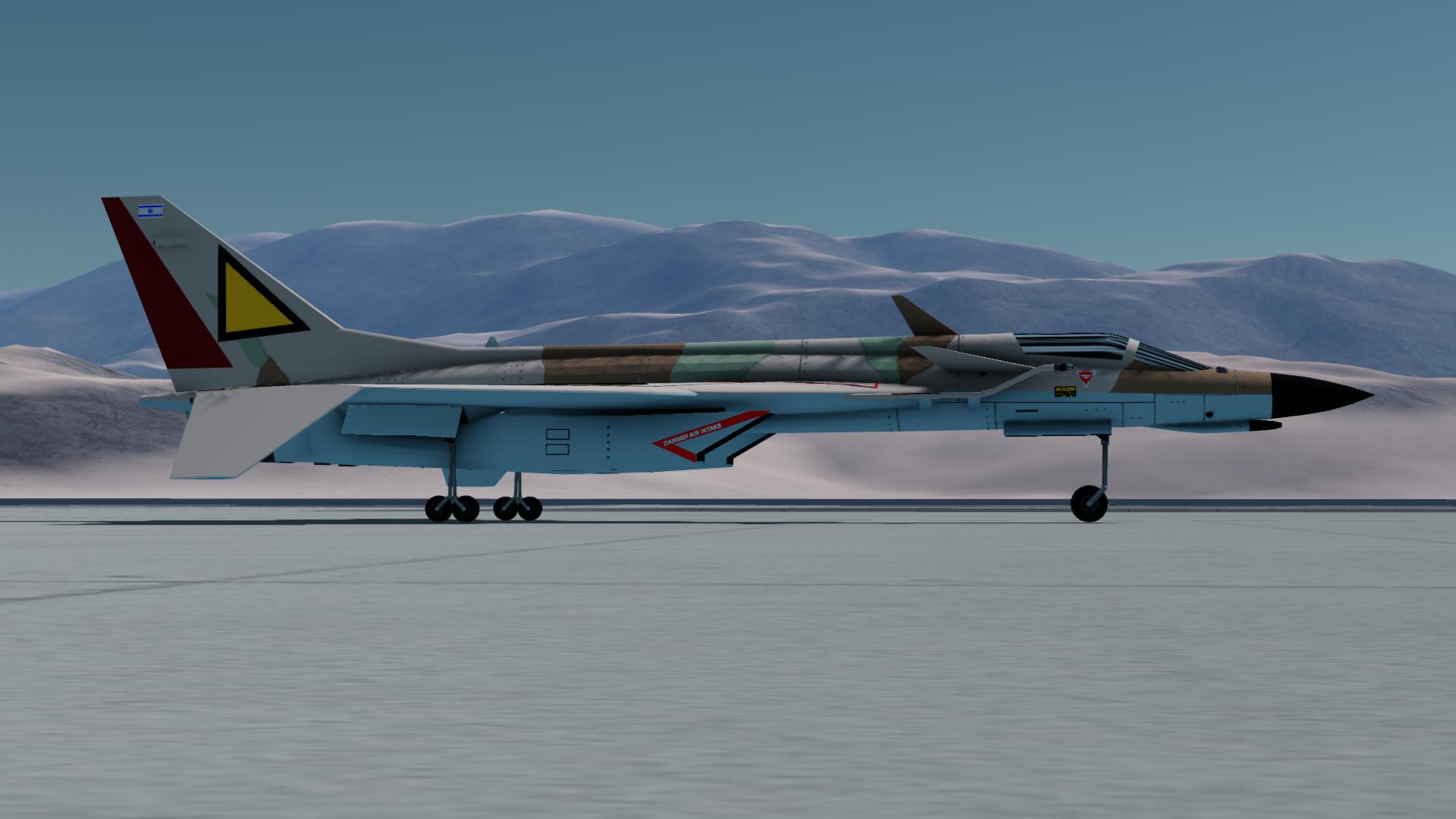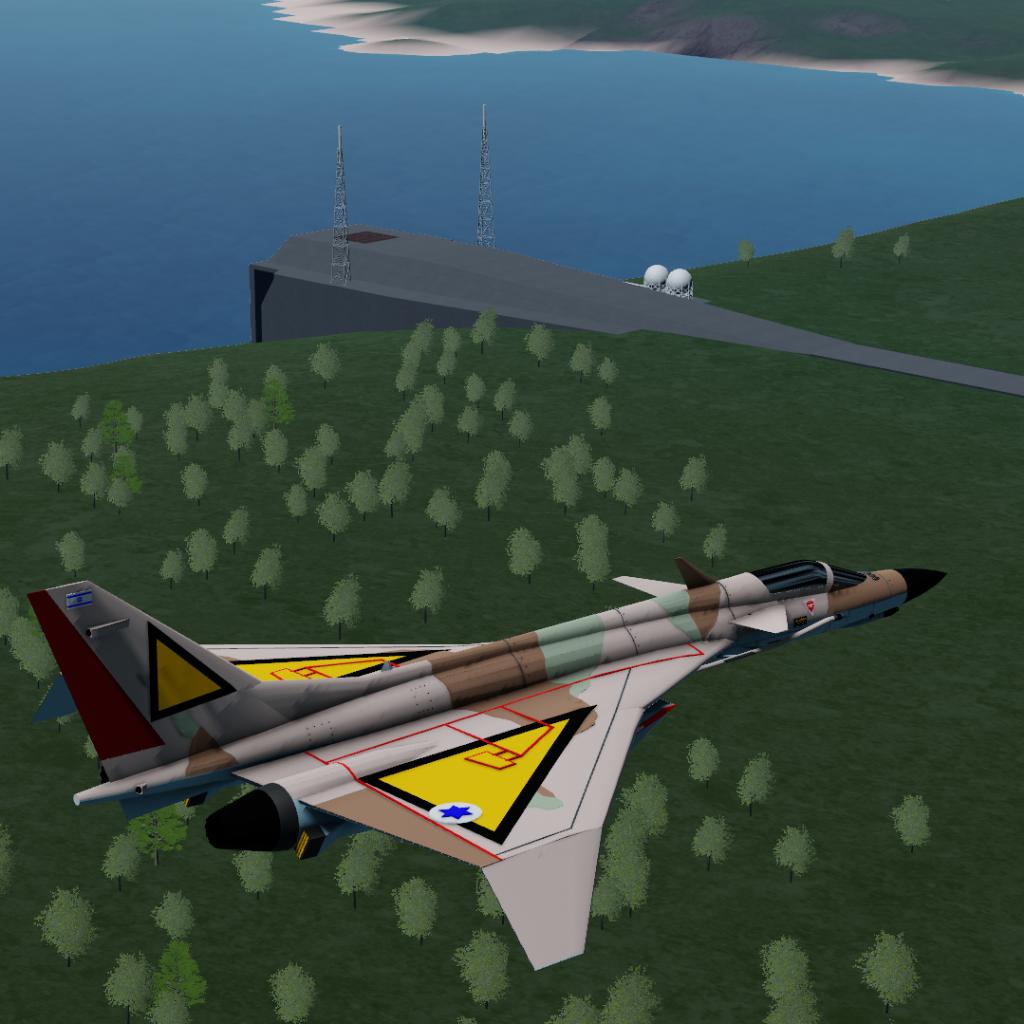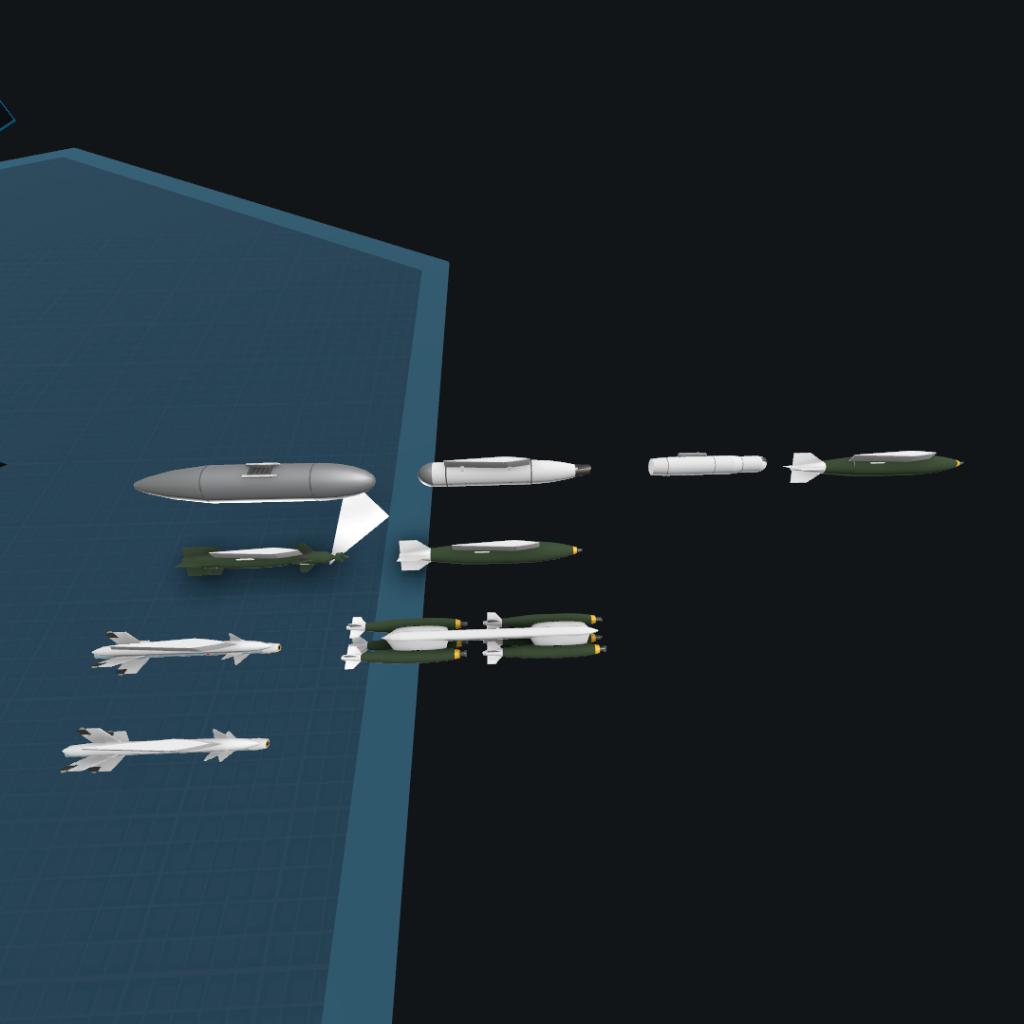The Negev Avenger, an impressive aircraft crafted by Israel Aerospace Industries (IAI), emerged from the crucible of conflict following the Yom Kippur War. This tumultuous period underscored the pressing need for advanced aerial defense capabilities, prompting Israel to embark on a path of innovation and technological prowess. Developed in tandem with the IAI Kfir, the Negev Avenger represents a pinnacle of Israeli engineering excellence, designed with a singular purpose: interception.
Born amidst the strategic imperatives of the era, the Negev Avenger stands as a formidable interceptor, meticulously engineered to counter the threat posed by Egyptian bombers. Its sleek and purposeful design embodies the nation's steadfast resolve to safeguard its skies against potential adversaries. With cutting-edge avionics, formidable firepower, and unparalleled maneuverability, the Negev Avenger epitomizes Israel's commitment to maintaining aerial superiority in the volatile Middle Eastern landscape.
Drawing inspiration from the harsh lessons of past conflicts, the Negev Avenger symbolizes Israel's unwavering determination to adapt and evolve in the face of evolving threats. Its development reflects a fusion of combat experience, technological innovation, and strategic foresight, culminating in a potent weapon system capable of meeting the challenges of modern warfare head-on.
As a sentinel of the skies, the Negev Avenger stands ready to defend Israel's sovereignty and uphold its security interests. With its formidable presence and unwavering resolve, it serves as a testament to the nation's resilience and ingenuity in the pursuit of peace and security in a turbulent region.
The remarkable reach of the aircraft extended far beyond its origins, finding homes in various corners of the globe and earning acclaim as a potent force in aerial defense. Its export to a diverse array of nations underscores its versatility and adaptability to meet the distinct needs of different air forces.
Venturing across continents, the aircraft found favor in Chile, Ecuador, and Colombia, where it stood as a stalwart guardian of national skies, bolstering defense capabilities and ensuring regional stability. Its adoption by the United States Navy in the role of aggressor aircraft attests to its prowess in simulated combat scenarios, where it provided invaluable training opportunities for naval aviators honing their skills against a formidable adversary.
Across the Atlantic, the aircraft's presence in Germany marked a pivotal moment in aviation history, heralding the transition from the venerable F-104G to a new era of advanced aerial superiority. Its deployment in Brazil and Spain further solidified its reputation as a reliable ally and a cornerstone of national defense strategies.
Yet, amid its triumphs, the aircraft faced setbacks in certain quarters, encountering failed bids and missed opportunities. In Argentina, despite initial interest, the aircraft yielded ground to the IAI Nesher, underscoring the complexities of international procurement decisions. Similarly, in China, while the aircraft's design caught the eye of military planners, the emergence of the J-19 Sea Dragon signaled a divergent path shaped by indigenous innovation and strategic imperatives.
In South Africa, the aircraft's aspirations faced a similar fate, as the nation forged ahead with the development of the Atlas Cheetah, charting its course toward self-reliance and technological independence.
Despite these challenges, the aircraft's legacy endures, a testament to its enduring appeal and enduring impact on the global aerospace landscape. Its journey embodies the complexities and intricacies of international defense cooperation, where geopolitical considerations, technological advancements, and strategic imperatives intersect in a delicate dance of power and prestige.
The formidable arsenal of the aircraft underscored its versatility and adaptability to a wide range of mission profiles, from air superiority to ground attack and close air support. At the heart of its offensive capabilities lay the lethal punch of a single 30mm DEFA cannon, a potent weapon system renowned for its devastating firepower and pinpoint accuracy. In Chilean variants, this cannon was upgraded to the 30mm ADEN cannon, further enhancing its combat effectiveness and lethality against airborne and ground targets alike.
With a complement of seven pylons strategically distributed across its sleek airframe, the aircraft boasted a formidable payload capacity, capable of carrying an array of munitions tailored to the demands of modern warfare. From the nimble and lethal Python 3 missile to the versatile AIM-9L Sidewinder employed by German aircraft, the aircraft's air-to-air capability ensured air superiority in contested skies.
Yet, its mission profile extended beyond aerial combat, as evidenced by its capacity to deploy a diverse array of ordnance, including gun pods, dumb bombs, and precision-guided munitions. Whether raining down destruction on enemy positions with unerring accuracy or delivering surgical strikes against high-value targets, the aircraft remained a force to be reckoned with on the battlefield.
In the ever-evolving landscape of aerial warfare, survivability is paramount, and the aircraft spared no expense in its defensive measures. Equipped with chaff and flare dispensers, it possessed the means to confound enemy radar and infrared-guided threats, enhancing its chances of survival in hostile airspace. Coupled with advanced radar warning receiver (RWR) sensors, which provided early warning of incoming threats, the aircraft embodied a comprehensive approach to self-defense, ensuring its pilots could operate with confidence in the face of adversity.
Completing its repertoire of capabilities, the aircraft featured a refueling probe, enabling extended operational range and endurance, crucial for sustained operations in distant theaters of operation. With each component meticulously engineered and integrated into its design, the aircraft stood as a paragon of technological innovation and operational excellence, a testament to the ingenuity and expertise of its designers and engineers.
The aircraft's storied service history is woven with tales of valor and sacrifice, as it has steadfastly served its nations in times of conflict and crisis. During the tumultuous Chilean-Argentinian Beagle Conflict, the aircraft took to the skies, flying daring missions along the border with Argentina, where it played a crucial role in defending national sovereignty and safeguarding territorial integrity.
From the fiery crucible of the 1982 Lebanon War to the present day, the aircraft has remained a steadfast guardian of Israel's skies, its distinctive silhouette a symbol of deterrence and resolve. Whether conducting precision strikes against hostile forces or providing close air support to ground troops, it has earned a reputation for unmatched reliability and combat effectiveness.
In Germany, the aircraft found new purpose and relevance, as it embarked on deployments to far-flung theaters of conflict, including the War in Afghanistan and the NATO bombing of Yugoslavia. Its lethal payload and unparalleled agility made it a formidable asset in the fight against insurgency and extremism, where it struck fear into the hearts of adversaries and bolstered the resolve of allied forces.
Despite the passage of time, the aircraft continues to serve with distinction, its capabilities honed and refined through decades of service. While it has bid farewell to the skies of Brazil, Spain, and Ecuador, its legacy lives on through a new generation of pilots and crews who continue to uphold its proud tradition of excellence. As it remains in active service in Israel, Colombia, Chile and Germany, the aircraft stands as a testament to the enduring bonds of friendship and cooperation forged through shared sacrifice and unwavering commitment to peace and security.
========================
controls: AG-1= landing gear system
the pylons are on the wings, unider the air intakes and centerline pylons, the weapons are in the front of the aircraft and can be attached onto their pylons
GENERAL INFO
- Predecessor: negev avenger
- Created On: Windows
- Game Version: 1.2.212.0
- Price: $12,458k
- Number of Parts: 1867
- Dimensions: 6 m x 15 m x 22 m
PERFORMANCE
- Total Delta V: 0m/s
- Total Thrust: 312kN
- Engines: 4
- Wet Mass: 24,450kg
- Dry Mass: 19,719kg
STAGES
| Stage | Engines | Delta V | Thrust | Burn | Mass |
|---|---|---|---|---|---|
| 1 | 2 | 0m/s | 0N | 0s | 14,327kg |
7 Comments
- Log in to leave a comment
-
-
-
-
15 İnTeLoG+2 1.9 years ago
First of all, hello "FokstrotTheSergal", I am an old Turkish follower of yours and I was interested in your crafts. I am trying a new craft as soon as it comes out. As an old follower, I have a request from you. Can you make Turkey's newly released 5th generation fighter plane, KAAN, as a mobile compatible version? I can give you followers
-
-









Speechless. Just cool as hell